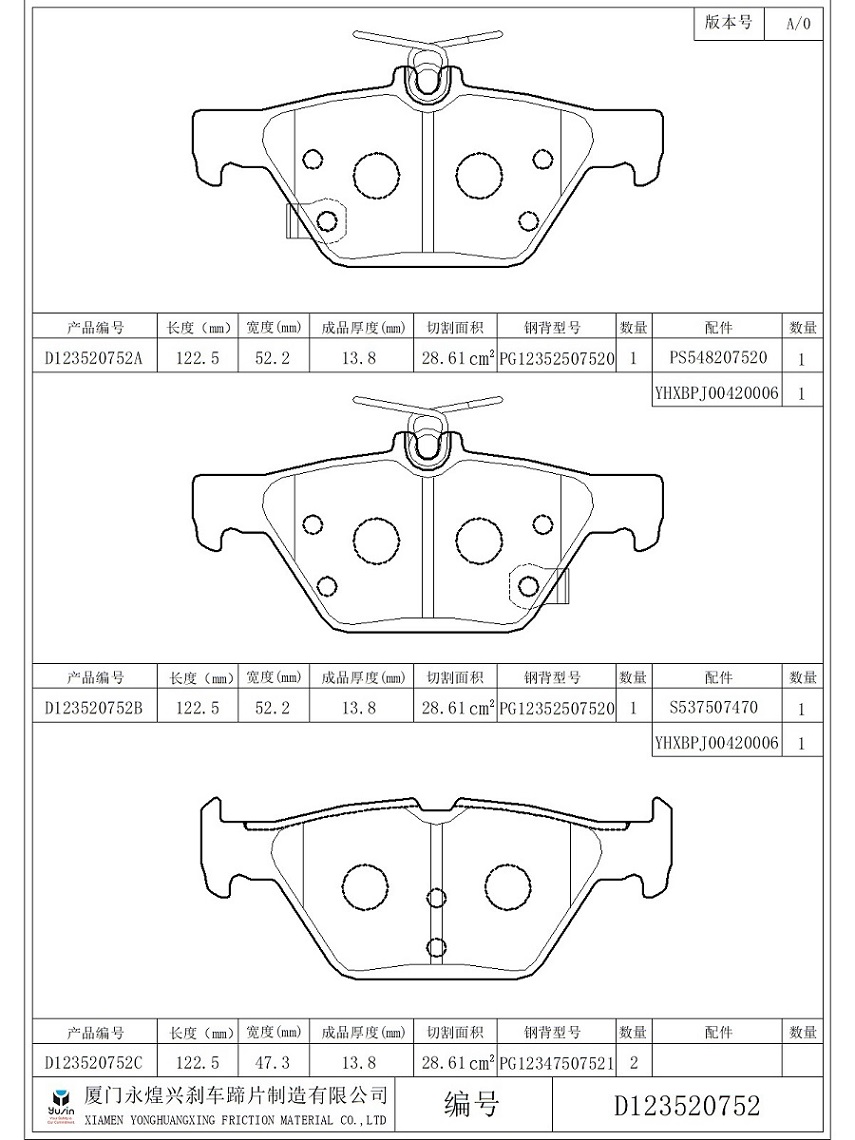The Chemistry of Safety: How Brake Pad Composition Influences Performance
2024-02-28
When it comes to vehicle safety, few components are as crucial as the brake pads. These seemingly small parts are responsible for converting kinetic energy into thermal energy, ultimately bringing your vehicle to a safe stop. However, not all brake pads are created equal. Their composition plays a significant role in determining their performance characteristics. In this blog post, we'll explore how the composition of brake pads affects their performance on the road, highlighting the importance of choosing the right type for your driving needs.
Understanding Brake Pad Composition
Brake pads are typically composed of a combination of materials, each chosen for its specific properties and performance characteristics. The primary components found in brake pad formulations include:
1. Friction Materials: The friction material is the part of the brake pad that makes contact with the brake rotor, generating the friction necessary to slow down the vehicle. Common friction materials include:
- Organic Compounds: Made from a blend of organic materials such as rubber, carbon, and kevlar, organic brake pads offer smooth, quiet braking performance and low rotor wear. However, they may not perform as well under high-temperature conditions.
- Semi-Metallic Compounds: Semi-metallic brake pads incorporate metal fibers, typically steel, along with organic materials. These pads provide improved braking performance and durability, making them suitable for a wide range of driving conditions.
- Ceramic Materials: Ceramic brake pads feature a blend of ceramic fibers, non-ferrous filler materials, and bonding agents. Known for their durability, ceramic pads offer excellent heat resistance, low noise levels, and reduced brake dust.
2. Structural Components: In addition to the friction material, brake pads also include structural components such as a backing plate, adhesive, and shims. These components provide stability, support, and noise reduction, contributing to overall braking performance.
Performance Characteristics
The composition of brake pads directly influences their performance characteristics, including:
1. Braking Performance: Different friction materials offer varying levels of braking performance. Ceramic brake pads, for example, provide excellent stopping power and consistent performance across a wide range of temperatures, while organic pads may offer smoother initial bite but may fade under heavy braking.
2. Noise and Vibration: The choice of friction material and structural components can affect brake pad noise and vibration levels. Ceramic brake pads are known for their quiet operation, while semi-metallic pads may produce more noise under certain conditions.
3. Heat Resistance: High-quality brake pads are designed to withstand extreme temperatures generated during braking without experiencing brake fade. Ceramic pads excel in heat resistance, making them ideal for high-performance driving applications.
4. Rotor Wear: The composition of the friction material can impact rotor wear. Organic brake pads typically produce less rotor wear compared to semi-metallic or metallic pads, helping prolong the lifespan of brake rotors.
Choosing the Right Brake Pads
When selecting brake pads for your vehicle, it's essential to consider your driving needs, preferences, and vehicle specifications. Factors to consider include:
- Driving style and conditions
- Vehicle weight and load
- Environmental considerations
- Budget and preferences for noise and dust levels
By understanding how the composition of brake pads affects their performance, you can make an informed decision and choose the right type of brake pads to ensure safe and reliable braking performance for your vehicle. Remember, when it comes to vehicle safety, every component plays a crucial role, and selecting high-quality brake pads is essential for safe and enjoyable driving experiences.



